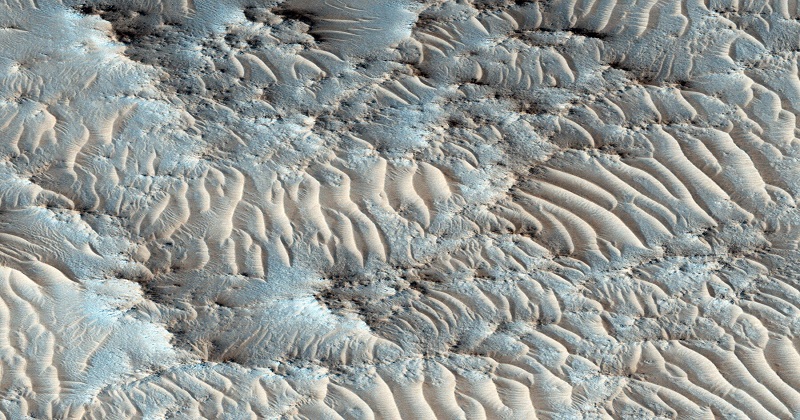
The National Aeronautics and Space Administration (NASA) on Monday, 6 September 2021, shared the image of the grey-coloured textured surface’s close up taken from section of Ma’adim Valles with the caption, ‘Beauty is everywhere.’ The image was taken from an outflow channel that begins in the southern lowlands and flows northward into the Gusev crater, the home of the MER Spirit rover. Located in Terra Cimmeria, the channel is 700km (435 miles) long, with widths up to 20km (12 miles) and depths up to 2km (1.2 miles) in places, according to NASA’s Mars Exploration Program.
‘Just as water and lava can leave their marks on a landscape, the wind is also an extremely powerful and erosive force. Wind shapes the surface of the Red Planet as these striking images of Maadim Vallis outflow channel on Mars demonstrates,’ the space agency wrote in an Instagram post. ‘The lines and colours in this photo taken from NASA’s High-Resolution Imaging Science Experiment camera on our Mars Reconnaissance Orbiter are almost reminiscent of an abstract painting,’ NASA further said.
https://www.instagram.com/p/CTctIxiAP0u/?utm_source=ig_web_copy_link
In the Martian highlands, the Ma’adim Valles shows numerous overlapping, densely buried impact craters with inconsistent infilling and rugged texture caused by the erosion of lava flows. They resemble riverbeds and canyons etched by water. According to the Journal of Geophysical Research-Atmospheres, the region on Mars was actually formed by the catastrophic overflow of a large paleolake. As per scientific hypothesis, the Ma’adim Vallis debouched to Gusev crater, 900 km to the north, the landing site for the Spirit Mars Exploration Rover when abandoned by the basin stream.
Read also: Thane: Men in PPE suits break ATM, burn CCTV cameras & steal Rs 1 lakh
Erosions of the intermediate basin are mostly concentrated along the eastern pathway. According to scientists, this has been followed by ‘air fall deposition, impact gardening, tectonism, and limited fluvial erosion.’ NASA describes the Gusev Crater as a ‘dried-up lake bed’ on Mars. ‘There’s not much doubt: this site contained a body of liquid water, at least for some amount of time,’ says Jim Garvin, NASA’s Lead Scientist for Mars Exploration. Three to four billion years ago, an asteroid crashed just south of Mars’ equator and formed the region. ‘It’s hard to imagine the landscape looking this way unless water was somehow involved,’ Garvin said in a NASA science release.

Post Your Comments